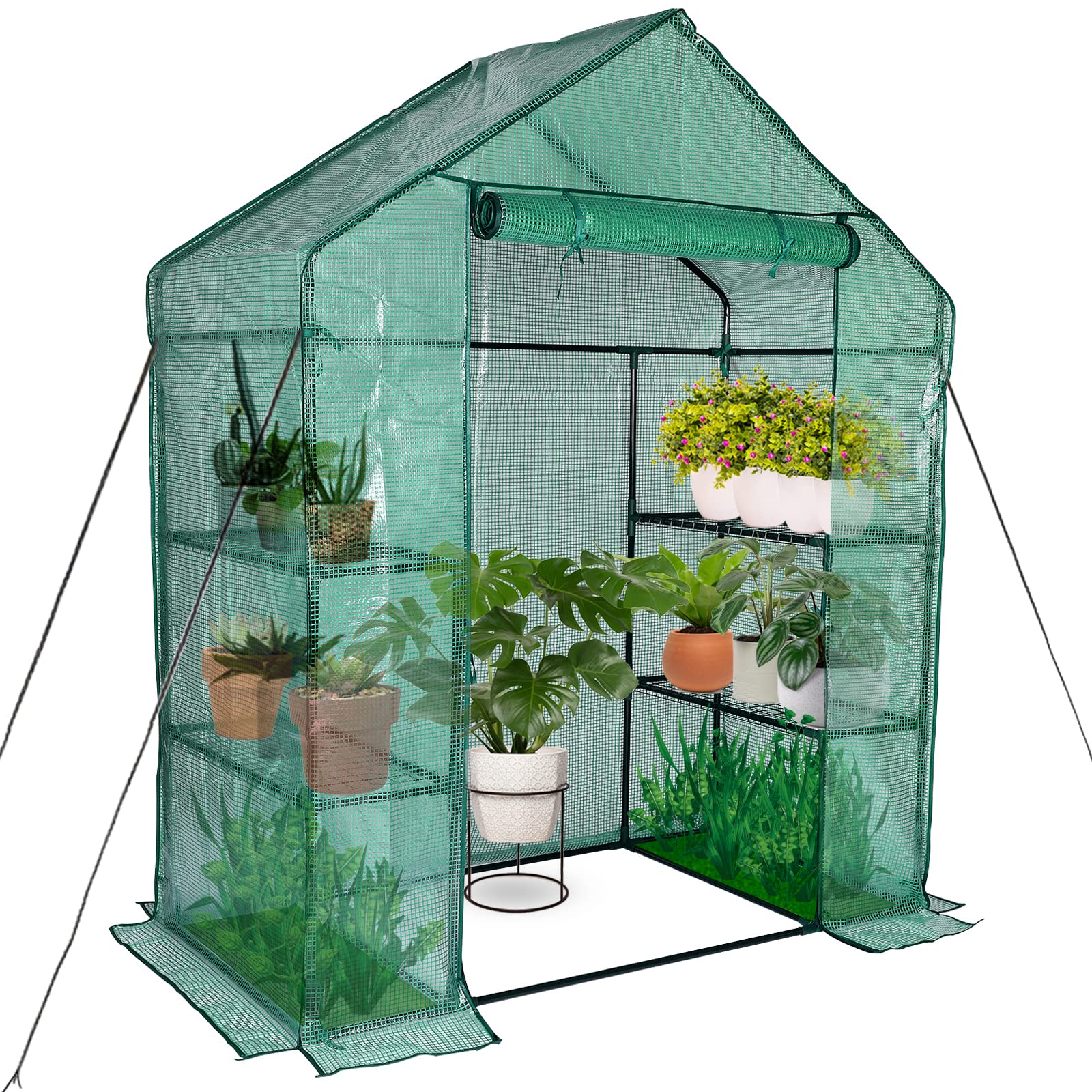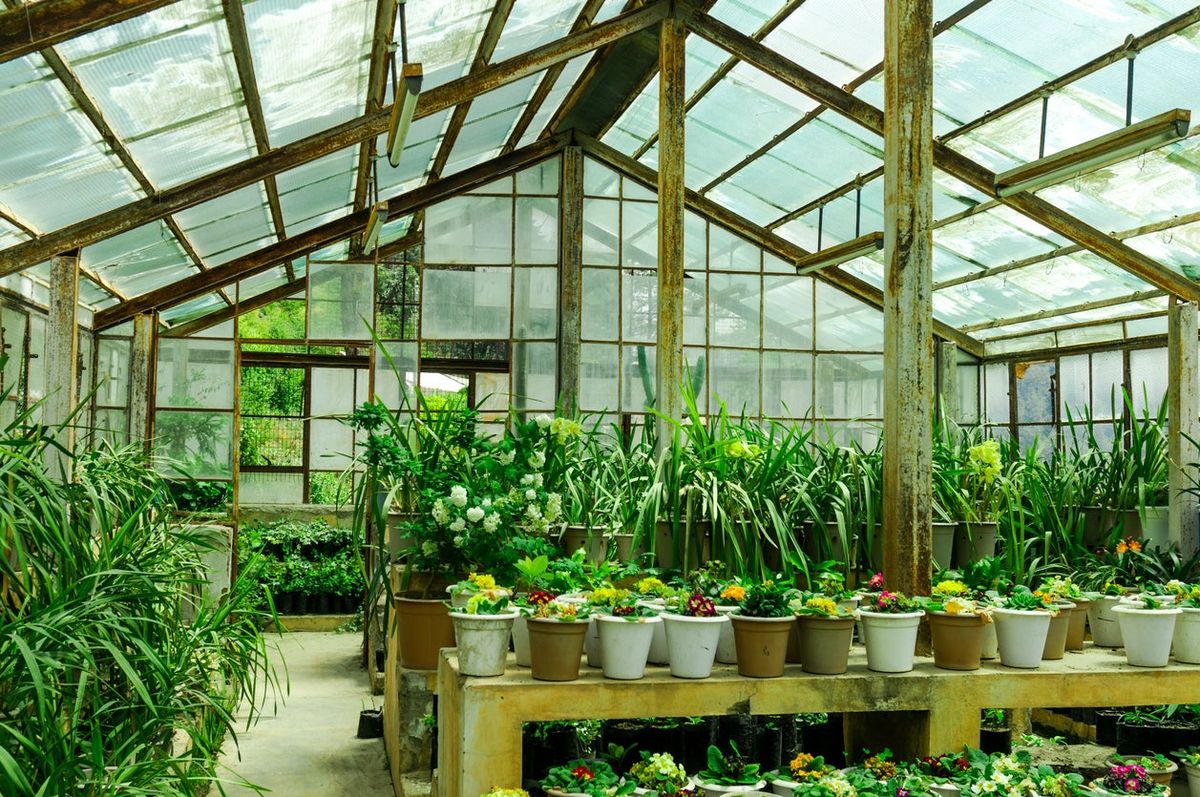
Types of Greenhouses


1. Introduction
A. Definition and purpose of greenhouses
Greenhouses are enclosed structures designed to create a controlled environment for plant growth. They provide shelter from harsh weather conditions, regulate temperature and humidity, and extend the growing season, enabling cultivation of a wider variety of crops throughout the year.
B. Significance of greenhouses in agriculture, horticulture, and research
Greenhouses play a crucial role in agriculture, horticulture, and research:
-
Agriculture: Greenhouses are essential for commercial crop production, particularly in regions with unfavorable climates or for out-of-season crops. They ensure consistent yields, protect crops from pests and diseases, and allow for intensive farming practices.
-
Horticulture: Greenhouses are widely used by hobbyists and home gardeners to grow their own fruits, vegetables, flowers, and herbs. They provide a controlled environment for nurturing seedlings, propagating plants, and extending the growing season.
-
Research: Greenhouses serve as controlled environments for scientific studies in plant biology, horticulture, agriculture, and environmental science. They allow researchers to manipulate environmental factors and observe plant responses under precise conditions.
C. Overview of the different types of greenhouses
Greenhouses come in a diverse range of types, each with its own unique characteristics and applications. The choice of greenhouse depends on various factors, including climate, crop type, budget, and available space.

2. Classification of Greenhouses Based on Structure
A. Lean-to greenhouses: Simple and economical designs attached to an existing structure
Lean-to greenhouses are constructed against an existing building, such as a house or garage, utilizing one side of the existing wall for support and cost savings. They are often used for small-scale home gardening or as extensions of living spaces.
B. Free-standing greenhouses: Versatile and customizable structures independent of existing buildings
Free-standing greenhouses are standalone structures that can be placed anywhere on a property. They offer greater flexibility in design, size, and placement, making them suitable for a wider range of applications.
C. Quonset-style greenhouses: Rounded arch design offering strength and snow load resistance
Quonset-style greenhouses feature a rounded arch design, resembling a half-cylinder. This shape provides superior strength and snow load resistance, making them ideal for areas with heavy snowfall or strong winds.
D. Even-span greenhouses: Simple rectangular structures with equal roof heights
Even-span greenhouses have a simple rectangular structure with equal roof heights. They are a popular choice for commercial growers due to their efficient use of space, ease of construction, and good light distribution.
E. Ridge-and-furrow greenhouses: Multiple parallel greenhouses connected by a central ridge
Ridge-and-furrow greenhouses consist of multiple parallel greenhouses connected by a central ridge. This design offers both the advantages of individual greenhouses and the efficiency of connected structures, making them suitable for large-scale commercial operations.

3. Classification of Greenhouses Based on Covering Material
A. Glass greenhouses: Traditional option offering excellent light transmission and insulation
Glass greenhouses have been the traditional choice for centuries, providing excellent light transmission and insulation properties. However, they can be more expensive and heavier than other materials.
B. Plastic greenhouses: Lightweight, durable, and affordable alternative to glass
Plastic greenhouses are a lightweight, durable, and affordable alternative to glass. They offer good light transmission and insulation, making them a popular choice for home gardeners and commercial growers.
C. Polycarbonate greenhouses: Combining the benefits of glass and plastic with high impact resistance and insulation
Polycarbonate greenhouses offer a combination of the benefits of glass and plastic. They are highly impact-resistant, provide excellent insulation, and transmit good light, making them a versatile option for various applications.
D. Fabric greenhouses: Lightweight and portable options for temporary or seasonal use
Fabric greenhouses are lightweight and portable, making them ideal for temporary or seasonal use. They are often used for starting seedlings, protecting crops from mild weather, or extending the growing season.
E. Double-glazed greenhouses: Enhanced insulation and temperature control for extreme climates
Double-glazed greenhouses feature two layers of glass or polycarbonate panels with an air gap in between. This provides enhanced insulation and temperature control, making them suitable for extreme climates or crops with specific temperature requirements.
4. Classification of Greenhouses Based on Ventilation
A. Natural ventilation: Utilizing vents, louvers, or open roofs for air circulation
Natural ventilation relies on vents, louvers, or open roofs to allow air circulation within the greenhouse. This method is simple and energy-efficient but may not be sufficient for precise temperature control or in areas with extreme weather conditions.
B. Forced ventilation: Employing fans or blowers to actively control airflow and temperature
Forced ventilation utilizes fans or blowers to actively control airflow and temperature within the greenhouse. This method provides more precise temperature control and is effective in areas with limited natural ventilation. However, it requires additional energy consumption to operate the fans or blowers.
C. Passive ventilation: Utilizing natural convection currents and chimney effects for air circulation
Passive ventilation utilizes natural convection currents and chimney effects to circulate air within the greenhouse. This method relies on temperature differences and strategically placed vents to create airflow. It’s a low-energy option but might not be as effective as forced ventilation for precise temperature control.
D. Evaporative cooling systems: Lowering greenhouse temperatures through water evaporation
Evaporative cooling systems use water evaporation to lower greenhouse temperatures. This method is particularly effective in hot, dry climates and can be combined with other ventilation methods for optimal climate control.
E. Hybrid ventilation systems: Combining natural and forced ventilation methods for optimal control
Hybrid ventilation systems combine natural and forced ventilation methods to achieve optimal temperature and humidity control. This approach offers flexibility and energy efficiency, utilizing natural ventilation when possible and relying on fans or blowers for additional control when needed.

5. Classification of Greenhouses Based on Usage
A. Commercial greenhouses: Large-scale structures for commercial crop production
Commercial greenhouses are large-scale structures designed for high-volume production of fruits, vegetables, flowers, and other crops. They often utilize advanced technologies such as automated watering systems, climate control systems, and artificial lighting to optimize growth and yield.
B. Research greenhouses: Controlled environments for scientific studies and plant experiments
Research greenhouses are specifically designed to provide controlled environments for scientific studies and plant experiments. They often feature specialized equipment for manipulating temperature, humidity, light levels, and other environmental factors.
C. Hobby greenhouses: Smaller structures for home gardeners and enthusiasts
Hobby greenhouses are smaller structures used by home gardeners and enthusiasts to grow their own fruits, vegetables, flowers, or herbs. They offer a controlled environment for nurturing seedlings, propagating plants, and extending the growing season.
D. Educational greenhouses: Used for teaching horticulture and botany in schools and universities
Educational greenhouses serve as learning environments for students to learn about horticulture, botany, and plant science. They provide hands-on experience with plant growth and management, fostering appreciation for agriculture and sustainability.
E. Community greenhouses: Shared spaces for community gardening and food production
Community greenhouses are shared spaces where members of a community can come together to grow food. They promote social interaction, local food production, and sustainable growing practices.
6. Factors to Consider When Choosing a Greenhouse Type
Choosing the right greenhouse type depends on several factors:
-
Climate and weather conditions: Consider the local climate and weather patterns when selecting a greenhouse design. A strong structure may be necessary for areas with heavy snowfall or strong winds.
-
Crop type and growing requirements: Different crops have varying light, temperature, and humidity needs. Choose a greenhouse that provides the environment best suited for your desired plants.
-
Budget and available space: Greenhouses range in size and cost. Consider your budget and available space on your property when making your selection.
-
Ventilation and temperature control requirements: The level of ventilation and temperature control needed will depend on your climate and crop type. Choose a greenhouse with a suitable ventilation system.
-
Personal preferences and aesthetic considerations: Greenhouses are not just functional structures; they can also enhance your property’s aesthetics. Consider your personal preferences and choose a style that complements your landscaping.
7. Conclusion
Greenhouses offer a multitude of benefits for agriculture, horticulture, and research. By understanding the various types of greenhouses available, their characteristics, and their applications, you can choose the structure that best suits your specific needs and goals. Whether you are a commercial grower, a home gardener, or a researcher, greenhouses can provide the controlled environment needed to cultivate healthy, thriving plants. As advancements in greenhouse technology continue, we can expect even more innovative designs and functionalities, leading to a future of sustainable and efficient food production.